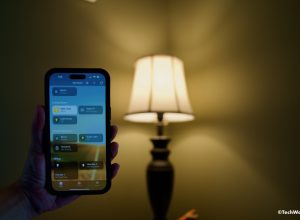Tom* is a truck driver in Georgia who says he’s “living the dream.” He might be on to something. When he gets his rig from A to B, his duty is done, no ifs, ands, or buts about it. Tom looks at folks with corporate jobs with a hefty dose of pity; their days never seem to be done. That smartphone keeps ‘dinging’ with email notices and messages way beyond quitting time. It’s too true for too many: the only time we stop ‘working’ is when we’re asleep.
“Remote working” has – for many – only exacerbated the problem. Work and life have an even thinner boundary, and while home has its comforts, there’s something about putting on office attire and being in a workplace. If nothing else, going to the office offered a change of scenery. But let’s put the griping aside. The remote workplace isn’t going anywhere, and we’re just going to have to learn to evolve and thrive in this new environment.

The BBN Times notes there is a “silver lining” to working from home, reporting: “Most employees are 22% more productive when working from home. The average person has 43% less meetings than they did before the pandemic. Most people have 2.5 more hours in their schedules than they did before Covid-19.” So, there are “pluses.” But pitfalls lurk. The biggest challenge most remote workers face is maximizing productivity while dealing with new, and abundant distractions. To get the most out of remote work, we’ll need to start developing new mindsets… and perhaps a few new tech skills, such as learning how to block websites. The effects of the pandemic sped up a transition that was coming anyway – now, productivity trumps all. You might have noticed some changes in yourself, becoming more computer literate, figuring out ways of doing collaborative projects that used to be “impossible” without face-to-face meetings. Companies and employees are growing and changing – and overall, that’s a positive thing.
Productivity boils down to getting stuff done and to accomplish that, you can’t waste huge chunks of the day surfing the web or procrastinating. Most of us, however, do a lot of that. Time management isn’t a quality most folks are born with. And so – as we adjust to the realities of a new era – it’s almost like we need to go back to school and re-learn some basic skills. Luckily, there are a few shortcuts to productivity. There are some of the most powerful “hacks” that can help you stay relevant (and employed) in the remote workplace.
It’s not going to surprise anyone to hear that eliminating distractions is the first thing that boosts productivity. No, you can’t work and watch Sweet Tooth on Netflix at the same time. Not many people are even genuinely able to work and listen to music – humans aren’t great multitaskers. If your home or workspace is noisy, noise-canceling headphones are a worthy investment (experiment with “lo-fi” music or white noise if you wish.) The biggest distraction, however, is sitting in front of you. Your computer is your lifeline and essential for work, but it’s also capable of taking you on some mega-time-wasting trips.
Instead of relying on willpower, a growing trend with remote workers is getting some assistance from a productivity app, or what others call a blocking app. Download it, sync it across all devices, then set parameters. For example: nothing but email and the company website permitted from 9 to 11 a.m. The apps offer a huge range of flexibility – and all the choices are up to you. They block pop-ups, have timer features and even allow you to set up “office hours” during which, people outside your work circle are sent a friendly message such as, “Sorry, but Susan is currently working. She’ll be available to respond at 3 p.m.” Take away the biggest distractor – the internet – and you’ll be shocked at how much more gets done in a few hours of “blocked out” time.
Another major booster for remote workers is the well-timed break. You’re not a slave or a machine. You can’t think or be creative when feeling sluggish. Put exercise into your schedule, and aside from a good workout, take breaks. Walk around the block. Stare out the window at some trees. Re-charge, re-new, and then return to work! Blocking apps all come with timers – the idea being to work like nuts for 25 minutes and then take a nice break. The idea works well for some and is worth giving a try. Finally, remember that humans of all ages thrive best when in a well-balanced routine. Sure, you could wake up at 10 if you want to, you could wear pajamas all day, you could balance your laptop on a table as you lie in bed… but before long, this “casualness” will seep into your work. Double-check the spreadsheet numbers? –Nah. Spellcheck the report? –It’ll be fine. Accept that we all need guide rails and a schedule. Working remotely allows a lot of leeway. If you’re a morning person, you can adjust accordingly and have more evening hours to yourself. But basing the day’s workflow on how you feel each morning isn’t going to lead to higher productivity, nor is it likely to grant you any extra free time. A “standard routine” is the way to go.
Disclosure: We might earn commission from qualifying purchases. The commission help keep the rest of my content free, so thank you!



